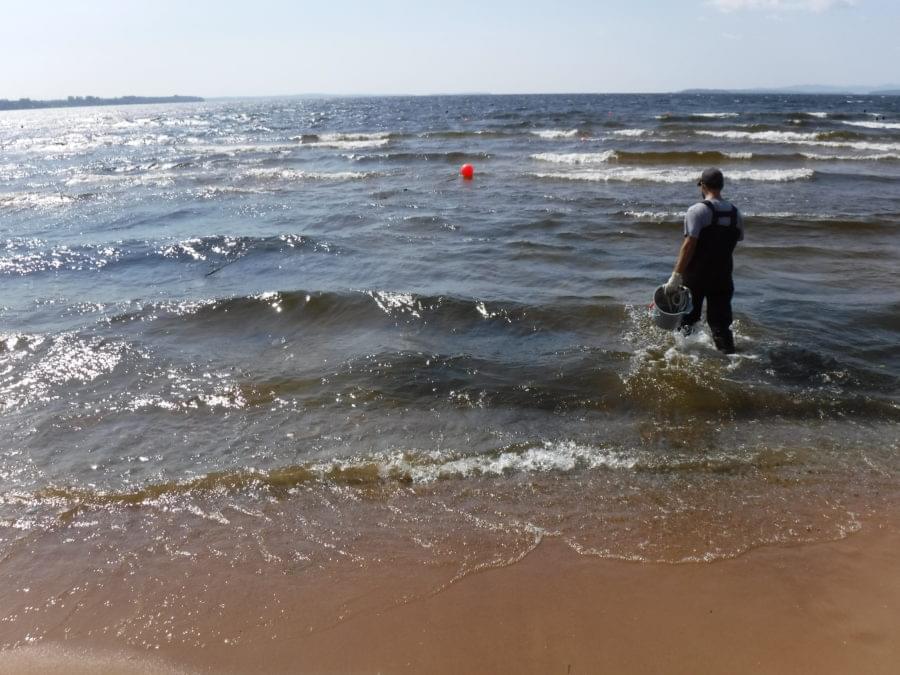City of Plattsburgh study used microbial source DNA tracking to determine source of bacterial contamination during storm events
Project summary
In 2017, the City of Plattsburgh conducted a study to determine the relationship between precipitation events and the concentration of fecal indicating bacteria (FIB), as well as the potential sources of FIB by analyzing DNA contained in water samples to determine which type of animal contributed the fecal bacteria.
Samples were collected over the summer of 2017 during dry weather, precipitation events, and CSO events. Seven locations were sampled: five points in rivers/creeks within Plattsburgh City limits and two locations at public beaches on the Lake.

Key results
- The investigation concluded that nonpoint sources of runoff contribute a higher amount of fecal contamination to Cumberland Bay than CSOs.
- The investigation identified a correlation between wet weather events and increased fecal indicating bacteria (FIB) levels in and near Cumberland Bay.
- The source of host bacterial DNA differed significantly based on weather conditions (see table below). During dry weather, the highest detected host source was bovine, canine, gull, or human, depending on the site. During wet weather, the highest detected host source was gull in all sites but one, which had gull and bovine as the highest on different sampling days. Following combined sewer overflow (CSO) conditions, the type of host source varied widely across sample locations and sampling events, with canine, gull, and human representing the highest sources at the beach sites specifically.
| Location Description | Sample Location | Dry Weather Conditions | Wet Weather Conditions - NO CSOs | Wet Weather Conditions After CSOs |
|---|---|---|---|---|
| Upstream - Saranac River | RW0 | Canine | Gull | Canine, Human, Gull |
| Upstream - Saranac River | RW1 | Canine | Gull | Canine, Bovine |
| Upstream - Saranac River | RW2 | Human | Gull | Canine, Bovine |
| Downstream - Saranac River | RW3 | Canine | Gull | Canine, Bovine, Human |
| Scomotion Creek | RW4 | Human | Gull | Bovine, Goose |
| Plattsburgh Municipal Beach | RW5 | Gull | No Samples | Gull, Human |
| Public Access Beach - McDonald's | RW17 | Bovine | Gull, Bovine | Gull, Human, Canine |
Other takeaways
Suggestions from the investigation for source mitigation strategies include landscaping deterrents for avian sources, public awareness campaigns at marinas to address human sources during dry-weather conditions, and increased pet waste stations for canine sources. These data can be used to help design and implement source mitigation strategies to prevent fecal contamination from reaching waterways.